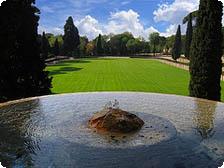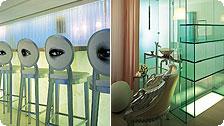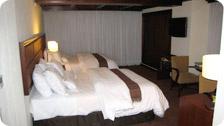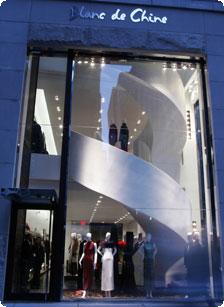by Kate Horan
In planning my most recent trip to Italy – and specifically Rome – it was as much for seeing Rome through another set of eyes as to settle a long simmering differing of opinion on which Italian city trumped all others. A close friend of mine and I had frequent disagreements pitting Rome against Florence for food, art, entertainment, artisan contribution, beauty and more.
This clash of loyalties is not unique in Italy and as one travels north to south, south to north and everything between, you will find Italians extolling the superiority of their “home” region. It is a matter of pride that is unlike anything I have experienced in the United States. And while neither my friend nor I are Italian, we were certainly embracing the nationalistic behavior.
My friend was convinced that on my previous stays in Rome, I simply had dined, slept and explored in the wrong places. This I could not argue. My general impression of Rome – to this point – was that it had as its focus tourism. As well, Rome’s population of 2.9 million, which swelled to more than 3.5 million with its workforce, made it a huge contemporary metropolis. Because of this, I found less authenticity, more commercialization, marginal food, too much traffic, and high prices, all amid a cacophony that was at times deafening.
Prove me wrong … I challenged.
And this my friend did. He cracked for me the veneer of Rome and introduced a side of the Caput Mundi (Latin for capital of the world) that I now share with you. With a new found verve fueled by lovely experiences, excellent food and befriending Romans, I also discovered much more on my own: talented artisans, curated “negozi” and charming places to pause and regroup.
The most iconic and spectacular features in Rome — the Pantheon, the Coliseum, the Forum Romanum, the Trevi Fountain, the Spanish Steps and the world famous churches – Il Gesu, s. Giovanni in Laterano and Ste. Maria Maggiore – are given destinations. St. Peter’s Cathedral and Vatican Museum are also musts when in Rome. There is plenty of literature to provide guidance with these important Roman sites. What follows here are the spots that will help you forge your own road to Rome.
Did you know… In the year 534, Dionysius Exiguus (also known as Dennis the Little), created the system, still used today, of counting the years starting with the birth of Christ? Unfortunately, he made some errors in calculation, so the birth of Jesus probably took place around 6 B.C. (Herod the Great, who is mentioned in the stories of Jesus’ birth in the bible, died in 4 B.C.)
REST
The stately Majestic Roma hotel is beautifully appointed and provides location, luxury, service and setting. It welcomes with rich and highly polished wood interiors, tufted velvet upholstery, soaring ceilings and original art. The Majestic is located on Via Vittorio Veneto – named after the Battle of Vittorio Veneto – and was also the area where much of Federico Fellini’s classic 1960 film La Dolce Vita took place. The population in this area of Rome is a combination of affluent tourists, distinguished Romans, politicians and celebrities. Steps from the hotel one can find upscale boutiques, cafes and restaurants and just up the hill is the Villa Borghese – a public park, museum and zoo.
Majestic Roma
Via Vittorio Veneto, 54
ROMA
06 421441
Did you know… The first city to reach the population of 1 million people was Rome, Italy in 133 B.C.?
REFUEL
At Ristorante Leonetti, one immediately feels they’ve found a spot where the power brokers of Rome dine. Located just a block away from Santa Maria Maggiore, politicians, celebrities and members of the clergy in full regalia are often seen dining together at large tables. The mix makes for a lively setting. Add to this excellent food and service presided over by the ebullient owner, Carmine. Benvenuti a Roma!
Some standout dishes included salmon cured in white wine and tossed with orange juice, olive oil and red peppercorns; Roman artichokes; seafood; and pasta.
Ristorante Lionetti
Via Farini 56-60
ROMA
06 4824379
Did you know…the first volume of recipes was published in 62 A.D. by the Roman Apicius? Titled De Re Coquinaria, it described the feasts enjoyed by the Emperor Claudius.
Tucked in on an axis street off of Piazza del Popolo is the charming Dal Pollorolo. Since 1936 this family trattoria and pizzeria has occupied the two dining rooms that sit side by side on Via di Ripetta. Seats fill up quickly with regulars who frequent the restaurant several times a week. The food is that good. And because everything is made on site, fresh, and with seasonal ingredients, the menu morphs often. A small wall-mounted chalkboard lists the daily specials, with items often disappearing before the lunch “hour” concludes.
Must haves in spring include the marinated artichoke and the puntarelle salad — two regional specialties. Pizza is only available for dinner and is served hot from the domed wood-burning oven that has a commanding presence in the first dining room. To close the meal the kitchen offers special homemade cookies sweetened with blood orange marmalade – perfect with an espresso.
Dal Pollarolo 1936
Via di Ripetta, 4/5
00186 ROMA
06 3610276
(closed Thursdays)
Did you know … according to lore, Roman husbands kissed their wives on the mouth at the end of the day – the intent not romantic but rather to make sure their wife was not drunk?
The ideal spot for a break in a day of shopping is the Vudabar, located at the intersection of Via della Vite and Via Frattina. Occupying the ground floor of four star “superior” Hotel Homs, Vodabar serves breakfast through dinner with a café and lounge seating area. I suggest cooling your heels in the late afternoon with an aperitivo or espresso. If champagne is your preferred quaff Vodabar has a staggering offering of 54 types of champagne by the glass. During my visit, I found the accompanying food (gratis with an aperitivo) to be generous enough to stave off dinner for several hours and at 6-10 euro, a good value.
Vudabar – Wine Bar and Restaurant
Via della Vite 71/72
00187 ROMA
06 6792976
www.vudahotels.it
Did you know… the Romans used poisonous lead as a sweetening agent?
Step off the Via Veneto and down into La Ninfa. A subterranean space located within the Majestic Hotel (but with direct access from the street), this is an ideal place to retreat after the sun sets for an aperitivo or small bite. The long horizontal space evokes the feel of a ship’s hull, lower ceiling with a slight curve. Clever use of mirrors, dark walls and wood create an overall inviting effect and the walls display photos of the celebs who sipped there before you. The namesake white marble sculpture, La Ninfa, crouches in the passage from bar to the dining area.
La Ninfa – Ristorante & Bar
Via Vittorio Veneto, 54
ROMA
06 421441
Farther up Via Veneto is the famed Harry’s Bar, and while not a secret spot, I would highly recommend going at least one night to experience the international jet-set that gather here for evening libations and distractions. Harry’s employs a talented “piano bar” duo that performs an astounding variety of songs – old classics to modern pop, and tapping many different languages. Their talent also extends to surveying the guest mix and selecting songs specifically to appeal to those present…and smiles of appreciation spread across faces. Service is top notch, the décor is layered and opulent and the prices reflect.
Harry’s Bar
Via Vittorio Veneto, 150
ROMA
06 4883117
RETAIL
Did you know … The term, “It’s all fun and games until someone loses an eye” is from Ancient Rome? The only rule during wrestling matches was, “No eye gouging.” Everything else was allowed, but the only way to be disqualified was to poke someone’s eye out.
Walk this Way…
Gianni Bravo produces quintessentially Italian footwear … beautifully constructed with high quality leathers and exotic skins manipulated into dynamic and seductive shapes. Perilously heeled for the City’s cobblestone streets… but no matter, it is the Italian way! More sensibly heeled boots round out the collection but the high heels are what capture gazes. As the designer’s website states: “for the foot and ankle and finally embarrassing the whole leg.”
Gianni Bravo
Via Mario de Fiori, 114
000187 ROMA
+39.06.69940969
Closet therapy…
For a global perspective of style, seek out the boutique Galassia. A temple of fashion that houses such designers as Ann Demeulemeester, Antonio Marras, Issey Miyake, Rick Owens, Zucca, Jean Paul Gaultier and more, it provides a respite from the single note designer stores often found in this tony area of shopping. Buyer Marcella Sciarra has pulled together a “collection” of collections, from attire to shoes, belts and edited accessories.
Galassia
Via Frattina, 21
00187 ROMA
06 6797896
A Pirate’s Bounty…
Imperatore di Capri’s windows tug at the attention of passers by. So excessive, exotic and overflowing, it harkens to old tales of treasure chests. You simply. Must. Look. Carvings, sculpture, mosaics are the backdrop for jewelry and accessories lazily draped. Stacked bracelets and bangles. Piles of rings and necklaces…strange, beautiful, unique. Victoria Modestini, the owner and practiced eye who buys and assembles this collection, will be happy to help you navigate her store.
Imperatore di Capri
Via Mario de’ Fiori, 6/a
ROMA
06 6784771
www.imperatoredicapri.com
TOP IT OFF
Travel often requires a hat, so says I. Whether in the summer to shade the heat or in the winter to stay dry and warm. Should you find yourself bereft of coverage, head to Coppola Store. Not too precious, but stylish and functional, these hats will take a pedestrian travel outfit to something decidedly more European.
Coppola Store
Via della Croce, 81A
00187 ROMA
06 6785824
Did you know … Rome has a belly button? Emperor Augustus had a “Golden Milestone” constructed in the city of Rome on which were listed the distances to all major cities in the Empire. Emperor Constantine later referred to this as the Umbilicus Urbis Romae, or the navel of Rome, and the origin of the saying “all roads lead to Rome.”
REGALE
Pack a lunch and bring a book for a lazy day in Villa Borghese – the second largest public park in Rome. The park is actually a large landscape garden in the naturalistic English manner and contains museums, a lake, fountains, temples, cafes and a zoo. It’s an easy walk from most points within the city center and a quiet, shaded escape from the populated streets.
Villa Borghese
Piazzale del Museo Borghese 5
00197 ROMA
Tel. 0039 06 8413979
Outside the city’s center is a park perfumed by the orange trees which give it its name: Giardino degli Aranci, or Garden of Oranges. It is also known as Parco Savello and affords postcard-like views of Rome. The Spanish Saint Dominic brought from his homeland the first orange tree that was planted in the monastery park. Saint Catherine of Siena, as legend tells, picked the oranges and made candied fruit which she gave to Pope Urban VI. The tree remains to this day, surrounded by the many others that were planted subsequently. A perfectly framed view of St. Peter’s Dome is visible when one peers through garden’s gate keyhole.
Parco Savello – Giardino degli Aranci
Via di Santa Sabina, Testaccio
00153 ROMA
*********
About the author: Sourced by stylists and as seen on ABC and in Marie Claire, Lucky and numerous other media outlets, Kate Horan established herself as a resource for Italian travel and fashion. Following a successful run in public relations, she launched her artisan accessories business, Sorelle Bionde< with an eye toward Italy. She immersed herself in the pursuit of uncovering new talent and unique expressions of style to ensure her clients had the most interesting and unique accessories available. Kate will live forever in our hearts.


















